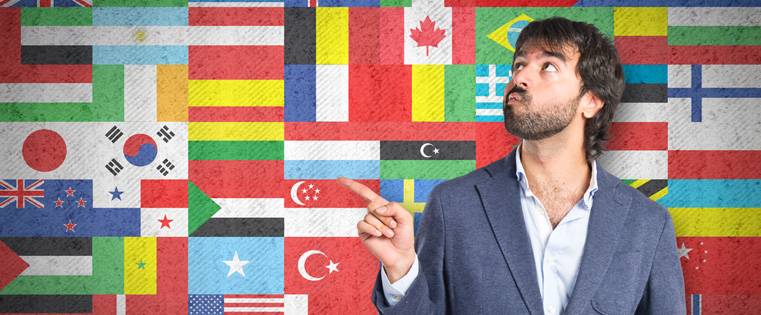Online Course Translations: 7 Reasons Not to Use Google Translate
There are various reasons Google Translate is not to be chosen for online course translations. This blog highlights 7 reasons to avoid Google Translate when it comes to translating online courses.

Google Translate supports the translation of 103 languages, and has over 200 million users worldwide. All you need to do is enter the required text in the simple web interface portal, and in a jiffy, your content is translated into your preferred language. So, what’s the problem, you might ask.
Google Translate is undoubtedly of great help for translating road signs in a foreign country, or pronouncing new words. However, when it comes to translating complex training manuals, legal documents or compliance training programs, it makes sense to go for a professional translator. Let me take you through 7 reasons to avoid Google Translate when it comes to translating online courses.
- Lack of Proper Sentence Structure
Let me share my experience with you. I tried to pick up a few Greek words to impress my friend who had come down from Greece. I used Google Translate to translate a simple phrase, “It’s raining, let’s have some tea.” However, Google translated the text to “Rain, let’s get some tea!” We had a hearty laugh. However, the point is, if even such small phrases cannot be translated correctly, how can you rely on Google Translate for your translation needs of online courses? With Google Translate, the text is translated word for word, not considering the fact that subjects and verbs are often reversed in other languages. However, a human translator is better able to demystify complex concepts during translations. While translating courses, it is highly important to have a proper sentence structure and avoid confusing the learner. - Words with Multiple Meanings
When a word has multiple meanings, Google Translate chooses the most commonly used meaning, regardless of the context. For example, the word ‘nails’ can mean your finger or toe nails, or the thin, sharp metal pieces used in construction. Imagine what would happen if one is used instead of the other!Such issues may become very bothersome when translating eLearning courses to suit other cultures and nations. Obviously, a professional translator would keep the context and cultural nuances in mind while translating. - Does Not Work Offline
You can access Google Translate only when you have an active Internet connection. With human translators, you would not have that issue. - Frequency and Redundancy
Different cultures have different terms and phrases that to refer to a particular concept. When translated through Google Translate, it gives a new interpretation. An adept translator can fight off this by preemptively clarifying the contrasts between dialects. Redundancy can put learners off, as they might find it a drab. Therefore, online courses have to be translated in a crisp manner. - Can Jeopardize Content Confidentiality
Google Translate is an open source portal, connected to the eDiscovery process. eDiscovery is the electronic aspect of identifying, collecting and producing electronically stored information (ESI). Any data that is placed in a public forum, can be tracked and accessed. This can jeopardize the confidentiality of the content.Let’s just say that to translate the legal documents, an organization relied on Google Translate, instead of approaching a proper translator. The data can be quickly processed on the eDiscovery platform. - Cultural Colloquialisms
Localization plays a major role when it comes to translating courses to reach a wider audience. There are so many aspects to be considered to ensure that cultural sensitivities are not hurt. There have been numerous instances when translations have gone horribly wrong due to lack of proper regional knowledge.For instance, regional slangs are quite difficult to be translated and they might lose the essence when translated. Google’s programming does not have the capability to bridge that gap between understanding the cultural nuances and just transliterating content, and may end up sounding like gibberish. On the other hand, a professional translator is well aware of the nuances and will ensure the right meaning. - Bugs and Glitches
Google Translate was in the news when it translated Russia to ‘Mordor’ in ‘automated’ error. Bugs and glitches are part and parcel of machine-operated processes. Bugs can cause a lot of damage and they have the potential to change the whole meaning. In the context of the automated error, guessing Mordor was child’s play for the fans of Lord of the Rings. However, one cannot detect errors if you are not well-versed with the language. Therefore, it is always better to rely on a human translator when it comes to translating complex documents or online courses.Changing a bunch of words is definitely not translation if the right meaning is not brought across. I am not saying Google Translate is a horrible tool. It is just that it is not suitable for translating complex pieces of information, which can be done by human translators with great accuracy. What has your experience been with Google Translate? Do share your thoughts.





